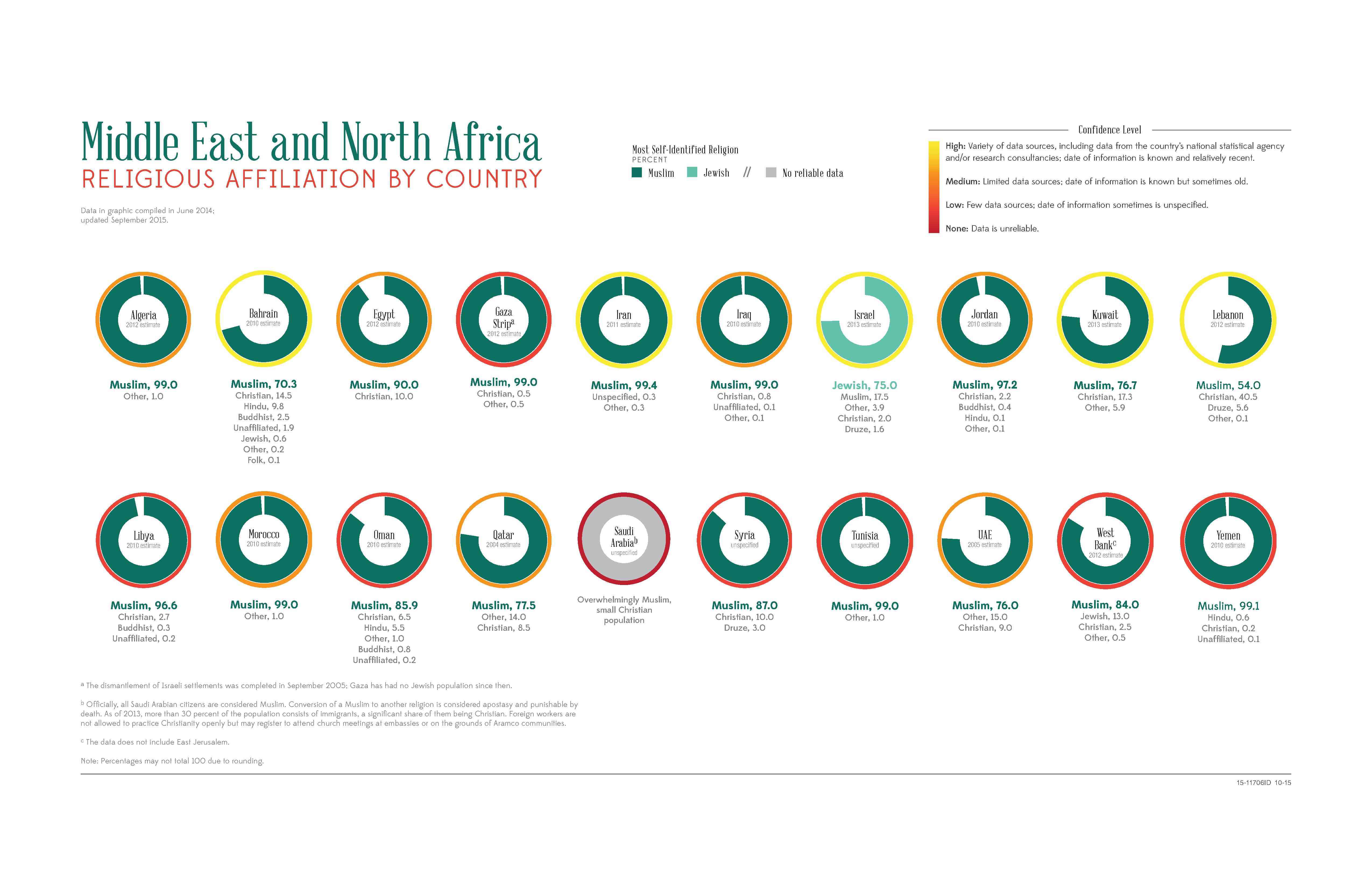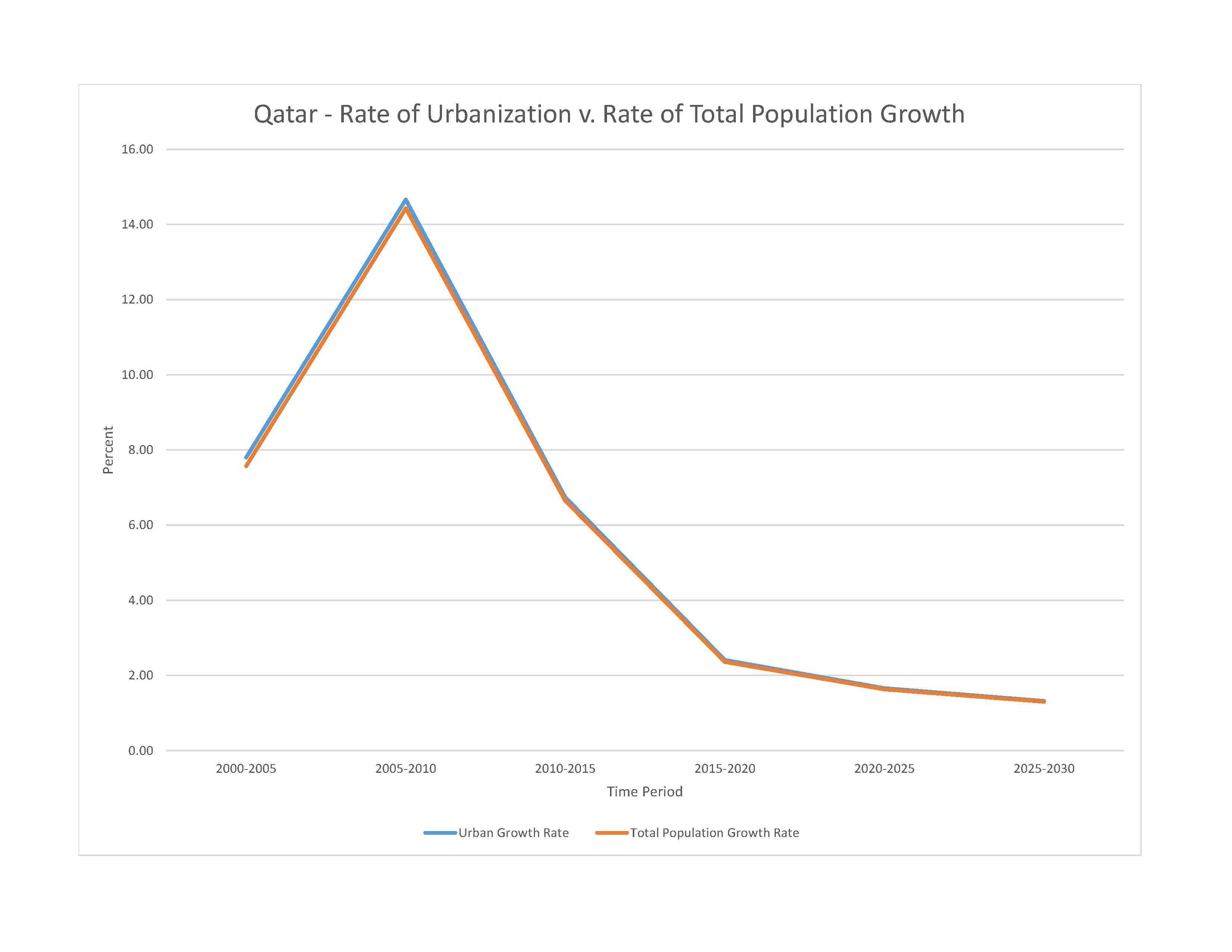
2,532,104 (2023 est.)
noun: Qatari(s)
adjective: Qatari
non-Qatari 88.4%, Qatari 11.6% (2015 est.)
Arabic (official), English commonly used as a second language
major-language sample(s):
كتاب حقائق العالم، المصدر الذي لا يمكن الاستغناء عنه للمعلومات الأساسية (Arabic)
The World Factbook, the indispensable source for basic information.
Arabic audio sample:
Muslim 65.2%, Christian 13.7%, Hindu 15.9%, Buddhist 3.8%, folk religion 
0-14 years: 13.08% (male 167,065/female 164,110)
15-64 years: 85.51% (male 1,757,982/female 407,120)
65 years and over: 1.41% (2023 est.) (male 23,544/female 12,283)
total dependency ratio: 20.7
youth dependency ratio: 16.1
elderly dependency ratio: 2
potential support ratio: 50.1 (2021 est.)
total: 34.2 years (2023 est.)
male: 35.5 years
female: 28.1 years
0.86% (2023 est.)
9.3 births/1,000 population (2023 est.)
1.4 deaths/1,000 population (2023 est.)
0.8 migrant(s)/1,000 population (2023 est.)
most of the population is clustered in or around the capital of Doha on the eastern side of the peninsula
urban population: 99.4% of total population (2023)
rate of urbanization: 1.66% annual rate of change (2020-25 est.)

798,000 Ar-Rayyan, 658,000 DOHA (capital) (2023)
at birth: 1.02 male(s)/female
0-14 years: 1.02 male(s)/female
15-64 years: 4.32 male(s)/female
65 years and over: 1.92 male(s)/female
total population: 3.34 male(s)/female (2023 est.)
8 deaths/100,000 live births (2020 est.)
total: 6.5 deaths/1,000 live births (2023 est.)
male: 7.1 deaths/1,000 live births
female: 5.9 deaths/1,000 live births
total population: 80 years (2023 est.)
male: 77.9 years
female: 82.2 years
1.9 children born/woman (2023 est.)
0.94 (2023 est.)
37.5% (2012)
improved: urban: N/A
rural: N/A
total: 99.6% of population
unimproved: urban: N/A
rural: N/A
total: 0.4% of population (2020 est.)
4.2% of GDP (2020)
2.49 physicians/1,000 population (2018)
1.3 beds/1,000 population (2017)
improved: urban: N/A
rural: N/A
total: 100% of population
unimproved: urban: N/A
rural: N/A
total: 0% of population (2020 est.)
35.1% (2016)
total: 0.96 liters of pure alcohol (2019 est.)
beer: 0.29 liters of pure alcohol (2019 est.)
wine: 0.07 liters of pure alcohol (2019 est.)
spirits: 0.59 liters of pure alcohol (2019 est.)
other alcohols: 0.01 liters of pure alcohol (2019 est.)
total: 11.8% (2020 est.)
male: 21.7% (2020 est.)
female: 1.9% (2020 est.)
N/A
65.8% (2023 est.)
3.2% of GDP (2020 est.)
definition: age 15 and over can read and write
total population: 93.5%
male: 92.4%
female: 94.7% (2017)
total: 13 years
male: 12 years
female: 15 years (2021)
NOTE: The information regarding Qatar on this page is re-published from the 2024 World Fact Book of the United States Central Intelligence Agency and other sources. No claims are made regarding the accuracy of Qatar 2024 information contained here. All suggestions for corrections of any errors about Qatar 2024 should be addressed to the CIA or the source cited on each page.
This page was last modified 04 May 24, Copyright © 2024 ITA all rights reserved.